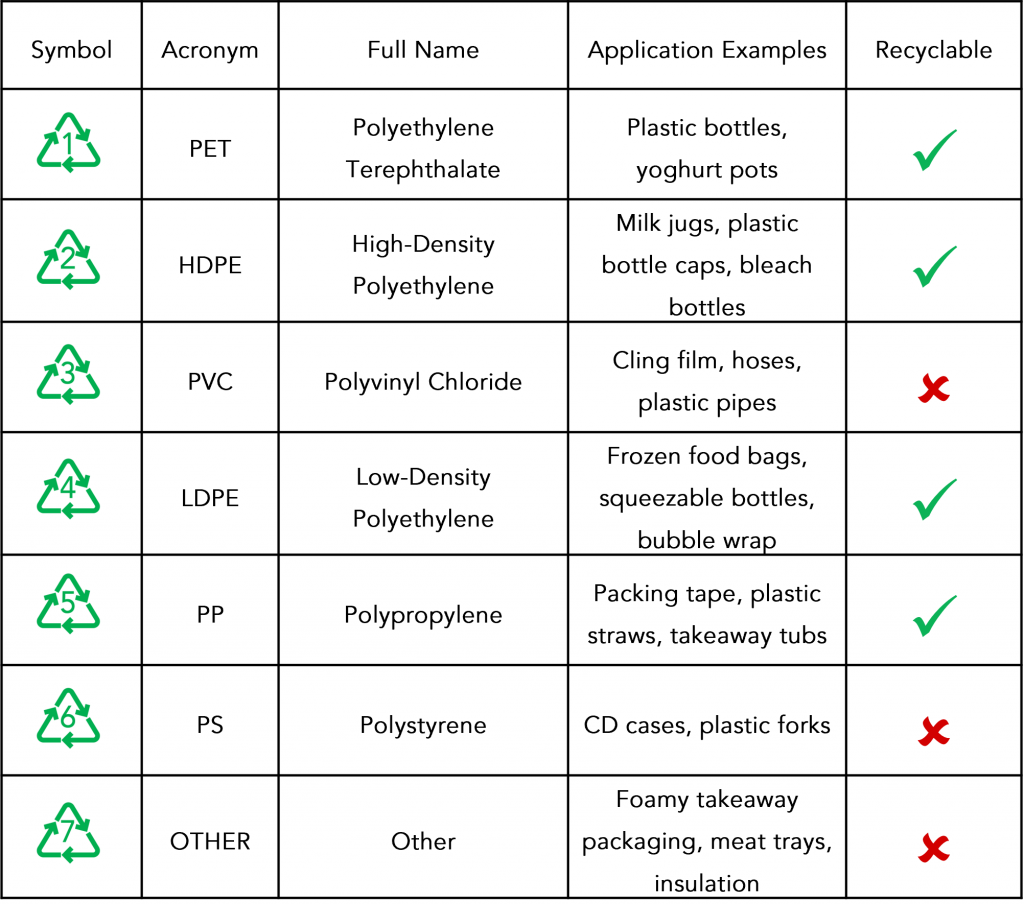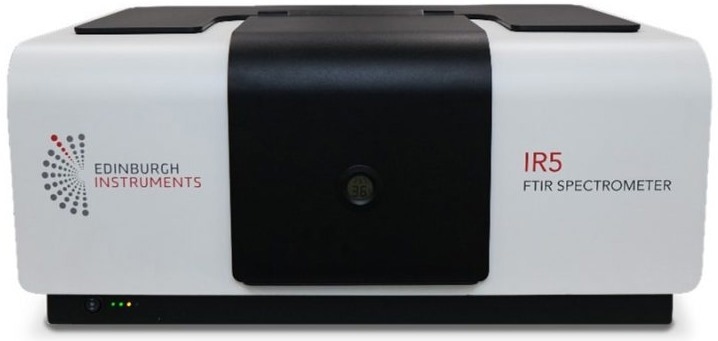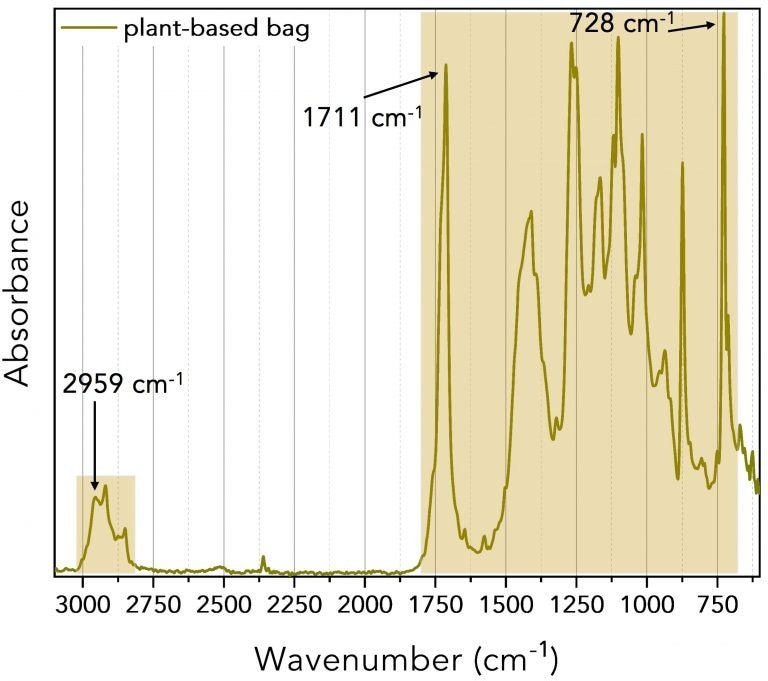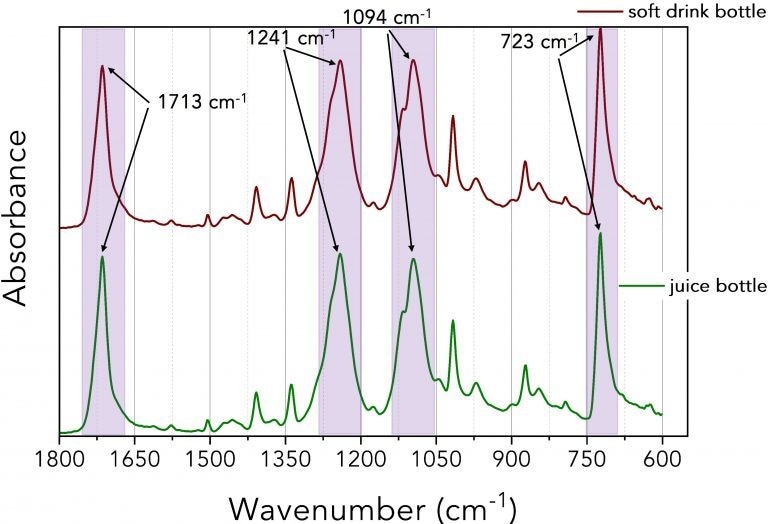One way to reduce plastic pollution in the environment is to identify different types of plastic to guarantee efficient waste management.
Plastics are one of the most widely utilized products globally, with plastics production in 2020 estimated to be 367 million metric tons worldwide.1
Plastics are highly versatile because of their durability, low-cost production, light weight, and design freedom. As a result, they are found in nearly every sector.
Plastic applications include packaging for the food industry, sealing and cladding for the construction industry, and insulation for the electrical and electronics sector.
The vast production of plastics has resulted in a throw-away culture, making plastic pollution one of the most ubiquitous environmental issues. However, one way to minimize plastic pollution is to improve waste management systems and recycling.
Separating plastics by type is fundamental to ensuring their suitable disposal and reuse. To aid the separation of plastics, the Society of the Plastics Industry created the Plastics Identification Code (PIC), typically seen on the surface of plastics.
Table 1 displays the PIC symbol with the acronym, full name, and examples of applications. When a PIC identifier is absent, spectroscopic methods like Fourier Transform Infrared Spectroscopy (FTIR) can be employed to rapidly identify and sort plastics for recycling.
Table 1. Source: Edinburgh Instruments

FTIR provides a powerful tool for qualitative and quantitative analysis. When a plastic absorbs IR radiation, it produces a spectrum representative of its molecular “fingerprint”. Different plastic samples provide different fingerprints, which allows the identification of plastics.
This article presents a study using an Edinburgh Instruments IR5 FTIR Spectrometer equipped with an Attenuated Total Reflection (ATR) accessory to identify different plastics.
Materials and Methods
Four plastic samples were selected for analysis: a plant-based bag for electronics packaging, a biodegradable bag, a juice bottle, and a soft drink bottle.
A sample of approximately 2 × 2 cm2 in size was cut from each of the four types of plastic. The samples were then analyzed using an Edinburgh Instruments IR5 FTIR Spectrometer equipped with an ATR accessory with a ZnSe crystal.
The ATR accessory demands little to no sample preparation and allows reliable and high-quality spectra to be obtained. To acquire a spectrum, the clamping arm of the ATR accessory applies pressure to the sample, providing consistent contact between the sample and the crystal.
The KnowItAll® spectral library is utilized to identify the plastics from their IR spectra.

Figure 1. Edinburgh Instruments IR5 FTIR Spectrometer. Image Credit: Edinburgh Instruments
Results and Discussion
Spectra of the four plastics were obtained with a resolution of 4 cm-1 averaging five scans with a total acquisition time of approximately 15 seconds for each spectrum. The biodegradable bag sample was identified (using the spectral library) as high-density polyethylene (HDPE) with a 94% match, as shown in Figure 2.
HDPE is a “pure” form of PE that has polymer chains that are absent of methyl (CH3) side chains, and only contain CH2 groups. This means that the polymer chains can be packed closer together, providing a denser material.
The band at 1465 cm-1 is a characteristic peak of HDPE. The bands at 719 cm-1, 2848 cm-1 and 2915 cm-1 all correspond to the methylene (CH2) group vibrations attributed to the rocking mode, the symmetric C-H stretch, and the asymmetric C-H stretch, respectively.3–5
Table 1 shows that the HDPE sample is a PIC 2 recyclable material.

Figure 2. IR spectrum of the biodegradable bag sample. Image Credit: Edinburgh Instruments
Figure 3 displays the IR spectrum of the plant-based bag for electronics packaging. Matching this spectrum with the spectral database enabled the identification of the main compound of the bag: polybutylene terephthalate (PBT). PBT is a thermoplastic polyester that has a similar composition and properties to PET.
PBT is typically quicker to crystallize than PET, and it has applications such as packaging and industrial-scale molding in the electrical and automotive industries.
The absorption bands between 2800 cm-1 and 3000 cm-1 are due to the O-H stretching vibration, and the narrower peaks at 728 cm-1 and 1711 cm-1 are a result of the C-H vibrations and C=O stretching, respectively.

Figure 3. IR spectrum of the plant-based bag sample. Image Credit: Edinburgh Instruments
Figure 4 presents the IR spectra of the juice and soft drink bottles. Both samples were identified as PET (PIC1 and safely recyclable, as shown in Table 1), with the juice bottle sample having a 77% spectral match and the soft drink bottle having an 85% match.
Characteristic PET bands that the IR5 resolved were at 1713 cm-1 due to the C=O stretch, 1094 cm-1 and 1241 cm-1 attributed to the C-O stretch, and 723 cm-1 due to the aromatic C-H out-of-plane bend.6

Figure 4. IR spectra of the soft drink and juice bottle samples. Image Credit: Edinburgh Instruments
Conclusion
The correct and efficient disposal and recycling of plastics is critical for a greener and cleaner planet. ATR-FTIR spectroscopy is a straightforward method that efficiently identifies plastics based on their characteristic IR spectrum.
An Edinburgh Instruments IR5 FTIR Spectrometer was employed for the rapid identification of four plastic samples that generated IR spectra of high quality.
References and Further Reading
- EU plastics production and demand – first estimates for 2020 • Plastics Europe
- Plastic Recycling & Resin Identification Codes | Maxpack
- C. Smith, Electromagnetic radiation, spectral units, and alkanes. Spectrosc. (Santa Monica) 30, (2015)
- C. Smith, The Infrared Spectra of Polymers II: Polyethylene. Spectroscopy 24–29 (2021) doi: 10.56530/spectroscopy.xp7081p7
- C. Smith, The infrared spectra of polymers, part I: Introduction. Spectrosc. (Santa Monica) 36, 17–22 (2021)
- R. Jung et al., Validation of ATR FT-IR to identify polymers of plastic marine debris, including those ingested by marine organisms. Mar. Pollut. Bull. 127, 704–716 (2018)

This information has been sourced, reviewed and adapted from materials provided by Edinburgh Instruments.
For more information on this source, please visit Edinburgh Instruments.